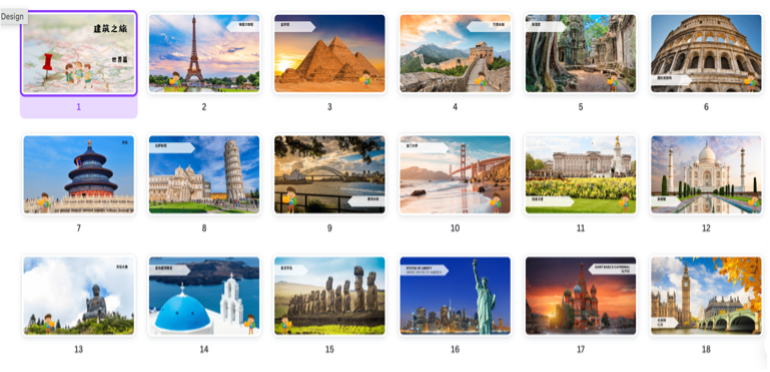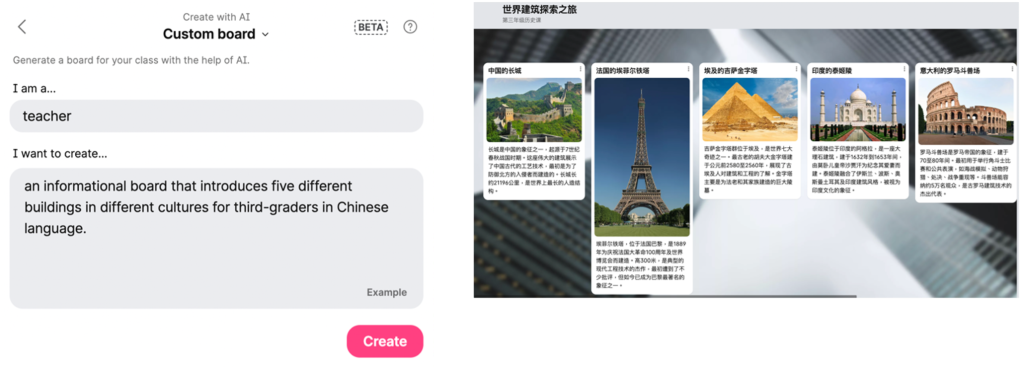How Generative AI Tools Assist With Lesson Planning
Using different tools at different stages of the lesson planning process can help teachers make effective use of their time.
Your content has been saved!
Go to My Saved Content.Since the release of ChatGPT, as educators we’ve faced lots of challenges, but this time is also full of possibilities. Since more educational artificial intelligence (AI) platforms and tools have been introduced, I’ve assessed a few AI tools with my colleagues and reflected on how they would impact our teaching, and I would like to share the experience of using MagicSchool and other AI tools in preparation for an elementary social studies class.
Lesson Plan Design With MagicSchool.ai
We described our desired learning outcomes and specific perspectives on the current cultural iceberg unit to the virtual artificial intelligence guide “Coach Raina” on MagicSchool.ai. A cultural iceberg is an academic concept that compares culture to an iceberg; only 10 percent of it is visible, while 90 percent is concealed under the surface. MagicSchool produced a lesson plan with objectives, learning activities, extension activities, and closure. It also integrated collaborative learning strategies such as turn and talk, think-pair-share, and gallery walks.
My colleagues and I utilize MagicSchool’s suggested 80/20 approach of using artificial intelligence to help with designing a lesson. AI does the bulk of the initial work, which we review for bias and accuracy. Then we step in and take care of the rest, which amounts to about 20 percent of the task.
Content Creation With Canva and Padlet
The lesson objective was to encourage students to identify the deep concepts behind cultural icebergs such as values, beliefs, customs, perspectives, and roles after learning about representative buildings in different cultures. We wanted students to gain the knowledge via a series of inquiry-based activities about these buildings before making connections.
In this specific lesson, we were planning to use buildings as a talking point to guide students’ understanding of the related cultural icebergs. Considering students’ lack of background knowledge about this topic, we believed that providing content in multiple formats would be helpful. So, we chose the magic design feature in Canva to generate representative buildings in different cultures.

In doing so, we saved time in finding high-quality images to create slides. One of our learning activities is group research based on the reading given by the teacher. To make sure that elementary students have a focused research environment, we narrowed down the content into seven representative buildings. The create with AI feature in Padlet allows teachers to generate customized content under tight time constraints.

Also, teachers can use their professional judgment to proofread and edit the content when needed. In our lesson, students were instructed to read about one building they were interested in with their partners and write down the answers to the questions we provided. We use this to scaffold students’ understanding with specific questions related to the building’s shape, color, and materials. We also asked them about their thoughts and feelings based on the reading and images. Before our students begin group work, my co-teacher and I model finding keywords and decoding unfamiliar ones to make sure they don’t get stuck before they begin.
Research With Monica AI
Preparing a lesson about an abstract topic always requires a large amount of reading and research. Generative AI such as Monica AI improves research performance with effective analysis. In our lesson, we used the Monica AI add-on in our web search. It provided an article summary, an information category, and related pages. This allowed us to focus and study the content deeply without being overwhelmed. It also helped us to ensure that the information being cited came from a reliable source.
Articulate Instructional Language With MagicSchool.AI
In the implementation phase of this lesson plan, we found it quite challenging for students to connect the building with the related cultural concepts. We went to Coach Raina from MagicSchool for more ideas. The AI coach suggested that we start from the outlook and function of the buildings first, then share the historical background knowledge of the buildings to guide students to find the concepts embedded within. With this framework, we used the Egyptian pyramids and the Malaysian stilt house to explicitly teach students how to find related concepts successfully. During the conversation with Coach Raina, we also found that the intricacy of using proper prompts could significantly affect the outcomes.
We started with general prompts such as “Can you design a lesson plan for fourth graders about different buildings?” Then, we realized that we needed to be more specific and used prompts similar to this: “How would you explain the connection between cultural concepts of belief with the Egyptian pyramids to a fourth grader?”
Reflection on Using Generative AI
We found that these educational generative AI platforms are helpful for supporting teacher efficiency in lesson planning, which includes customized content, instructional language, and learning activities. It saves us time in writing instruction and creating content, even though we need to use professional judgment to check for accuracy and bias. Conversely, we see these tools as a great co-pilot in teaching and learning.
It’s wonderful to see these AI tools automating our routine tasks in such a short time; however, simply copying and pasting would not make learning meaningful for our students. And when we notice that the content and design ideas are very similar to our current practice, we see generative AI as an inspiration to develop and contextualize appropriately with our own creativity and expertise.
